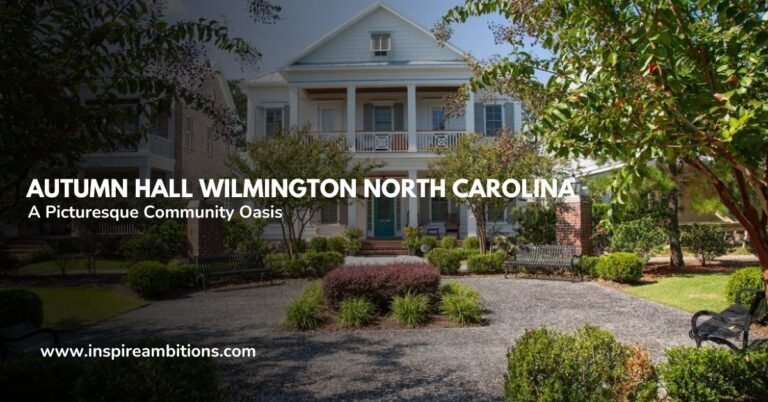Código postal Buffalo Nueva York: su guía postal completa
Zip codes are essential components of postal addresses in the United States, serving not just for sorting mail but also as indicators of geographical regions, demographics, and, in some cases, even socioeconomic status.
Buffalo, New York, spans a range of zip codes, from 14201 to 14280, encompassing various neighbourhoods with distinct characteristics. This range indicates a bustling city with diverse districts, reflecting its rich history and the complexity of its urban layout.

Buffalo’s system of zip codes also plays a pivotal role in tasks such as mapping, real estate analysis, planning delivery routes, and more.
Notably, zip codes like 14201 represent areas in the city’s heart, while others, like 14280, might pertain to locations on the periphery or specific institutions. Understanding the zip code system is invaluable in diverse contexts, from logistical operations to demographic studies.
Zip Code Buffalo New York – Key Takeaways
- Zip codes in Buffalo, New York, tell a story beyond simple mail sorting.
- The range from 14201 to 14280 encompasses various parts of the city, each unique in makeup.
- These codes are essential for logistical, real estate, and demographic insights.
Overview of Buffalo’s Zip Codes

Buffalo, New York, is defined by a range of zip codes spanning 14201 to 14280, encompassing several neighbourhoods and serving as a pivotal maritime and postal framework within the city.
Significance of Zip Codes in Buffalo
Zip codes are crucial for efficient mail processing and aid in the area’s demographic, socioeconomic, and geographical analysis. The USPS utilizes these codes to streamline post delivery across Buffalo’s diverse districts. Residents and businesses depend on accurate zip code information for everything from shipping to service provision.
- 14201 marks the beginning of Buffalo’s zip code list.
- 14280 represents the highest number in the sequence.
Historical Evolution of Area Codes
The USPS introduced the zip code system 1963 to improve mail delivery efficiency. Over time, Buffalo’s area codes have expanded to accommodate the growing city and its evolving infrastructure.
- Erie County, of which Buffalo is a part, contains multiple zip codes reflecting its size and population distribution.
- Not restricted to just zip codes, area codes for telephone services like 716 have also been subject to change, reflecting the city’s progression and need for more phone numbers.
Buffalo’s postal codes blend history and functionality, serving as a testament to the city’s growth and the foresightedness of systems like the USPS. Whether sending mail, setting up services, or simply exploring the city, understanding Buffalo’s zip codes is critical to navigating and connecting the Empire State.
Demographics and Housing

In exploring the demographics and housing of Buffalo, New York, you’ll uncover the diversity and living conditions within this vibrant city. You will delve into detailed population statistics and receive insights into households and housing, providing a clearer picture of the community.
Population Statistics
- Total Population: Buffalo’s population is approximately 592,039, reflecting a diverse urban tapestry.
- Race and Ethnicity: The racial composition of Buffalo includes 42% White, 33% Black or African American, and 9% Asian residents, among other groups.
Household and Housing Insights
- Households: Buffalo shows a mix of owner-occupied and renter-occupied homes; a greater insight into family sizes and types is available through further research.
- Housing Units and Estimates: The city has a variety of housing units, with some areas showing a small number of vacancies, which suggests a stable housing market.
- Ingreso: Access to median household income data is crucial in understanding the economic standing of the residents, which can be explored to discern the community’s average income.
- House Value: Gaining knowledge of the average house value can offer you an indication of the local real estate market and investment potential.
By understanding these aspects, you gain insight into the fabric of Buffalo’s neighbourhoods, helping you grasp this New York locality’s economic and communal dynamics.
Geographical Characteristics
Buffalo, New York, presents diverse geographical characteristics that define its physical layout and environmental conditions. Spanning distinct urban, suburban, and industrial land use zones and experiencing a typical Eastern climate, the region’s geography significantly influences daily life.
Spatial Distribution and Land Use
Buffalo, NY, is part of Erie County and is situated at the confluence of Lake Erie and the Buffalo River, attributed to its varied land and water areas. Buffalo’s coordinates place it at approximately 42.8864° N latitude and 78.8784° W longitude. Land use within the city is sectioned into:
- Urban Areas: Concentrated towards the city centre, characterized by high-density residential and commercial buildings.
- Suburban Zones: Surrounding the urban core, these areas feature lower-density housing and local businesses.
- Industrial Sites: Found especially near the waterfront, reflecting Buffalo’s historical significance as a trade hub.
The city sprawls over 42.19 square miles of land, with a water area significantly contributing to its land use, given its lakeside location.
Local Time and Climate Information
Buffalo operates within the Eastern Time Zone (GMT -05:00) and adheres to Eastern Daylight Time during the appropriate months. Here’s what you need to know about the local time and climate:
- Time Zone: Eastern Standard Time (EST) or Eastern Daylight Time (EDT) during daylight saving times.
- Clima: Buffalo experiences a diverse weather pattern:
- Warm Summers: With average temperatures reaching 80°F (27°C).
- Snowy Winters: Lake-effect snow contributes to significant snowfall totals.
The map of Buffalo illustrates not just the city’s landforms but also how urbanization has grown in response to the local geography. Despite the city’s robust expansion, you’ll find that it retains vast open space and waterfronts crucial for leisure and the local ecosystem.
Administrative and Mailing Information
When managing your mail in Buffalo, New York, understanding the administrative regions and mailing details, such as ZIP codes, is essential. Correctly formatting addresses and knowing the relevant statistics can streamline your experience with the U.S. Postal Service.
Addressing and Mail Delivery
Residential and Business Mailboxes:
- Buffalo has a detailed network of postal codes, crucial for sorting and delivering mail efficiently to residential and business mailboxes.
- PO Box Services: For privacy or convenience, PO Box services are available, serving as an alternative mailing address.
Using USPS Services:
- Properly addressing mail requires including the specific ZIP code to ensure timely delivery by the U.S. Postal Service (USPS).
- Buffalo is part of Erie County, and when addressing your mail, keep the county in mind for any location-based services.
Statistical and Economic Data
Demographics and Employment:
- Understanding Buffalo’s demographic profile, such as total population and households, can be beneficial, mainly if your business relies on local market data.
- Knowledge of employment rates and employee details helps assess Buffalo’s economic vitality.
Businesses and Economic Output:
- Total Businesses: Regional economic health is depicted by the number of businesses and annual payroll.
- The postal service’s data on business mailboxes and annual payroll showcases the volume of commercial activity in Buffalo, affecting the flow of mail and package delivery demands.






